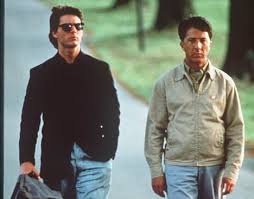My
eldest grandchild started school several weeks ago. For the past five years one question that
keeps reoccurring in family discussion is whether the child is autistic. Given the number of articles in the various
media outlets about autism it is not surprising that many parents are concerned
about it.
Recently
a book review in The New Yorker, Seeing
The Specturm discussed a new history of autism. According to the article autism was
discovered separately during the Second World War by Leo Kanner and Hans
Asperger. This is not quite true in that
Humm and Wadsworth in 1935 defined the Autistic component in their seven
component temperament scale as including seclusiveness, shyness, suggestibility
and the like, accompanied by an ability to visualize and to concentrate on
special tasks, excluding diverting interests.
In addition according to Humm and Wadsworth everyone of us had all seven
components in our temperament, the differences being where we are each positioned
on the seven spectrums.
Tragically
this model was not widely known so that initially autism was viewed as a
developmental disorder caused by bad parenting, particularly non-affectionate
mothers. However as later studies showed
that identical twins were more likely to share autism than fraternal twins, the
genetic basis for autism became more accepted.
The
tipping point probably was Dustin Hoffman’s performance in ‘Rain Man’ (1988) (even
though personally I think the Oscar should have gone to Tom Cruise.) Since then there has been much work on
analysing autism and developing behavioural treatments such as Applied
Behaviour Analysis. Unfortunately such
treatments are expensive requiring around sixty hours of expert attention for two to three years. Tragically there have been quack treatments
developed and various false hypotheses such as vaccines causing autism.
The
conversion of autism to a spectrum disorder began in the mid-1960s and when
British psychiatrist, Lorna Wing, demonstrated that Asperger’s Syndrome as
being part of the autistic spectrum, the DSM (Diagnostic and Statistical Manual of Mental Disorders) began to
define autism as a distinct mental illness and a spectrum disorder.
The
tragedy now is that some individuals who are positioned say two standard
deviations at the high end of the autistic spectrum, particularly if they have
high intelligence can lead relatively normal and productive lives and thus claim
there should be no talk of pathology and medical programs. They refer to
themselves as neuro-divergent.
This is
of little comfort to parents with children at the 1% end of the spectrum. It is estimated that around 240,000
Australian suffer from chronic autism which equates to 1 child in 100. One can only sympathise with the parents. One article described such children as having
a volcano inside them that suddenly erupts into terribly disruptive behaviour.
If you
want to learn more about the Artist (my name for the Autistic) component have
a look at my webinar.

No comments:
Post a Comment